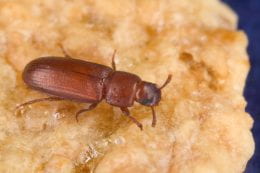 The recently updated Kansas Garden Guide is an excellent resource for growing many kinds of produce in Kansas. But it is also a great resource for guidance on harvesting and storing your bountiful harvest.
The recently updated Kansas Garden Guide is an excellent resource for growing many kinds of produce in Kansas. But it is also a great resource for guidance on harvesting and storing your bountiful harvest.
In Chapter 13 of the Kansas Garden Guide, it guides you through the indicators of when to harvest produce including size, color and optimal harvest method. Preventing foodborne illness is key at this point due to presence of wildlife, personal hygiene or cross-contamination from dirty equipment. Some types of produce are best stored in the refrigerator, some can be at room temperature. Storage conditions of humidity and temperature also affect length of storage time.

